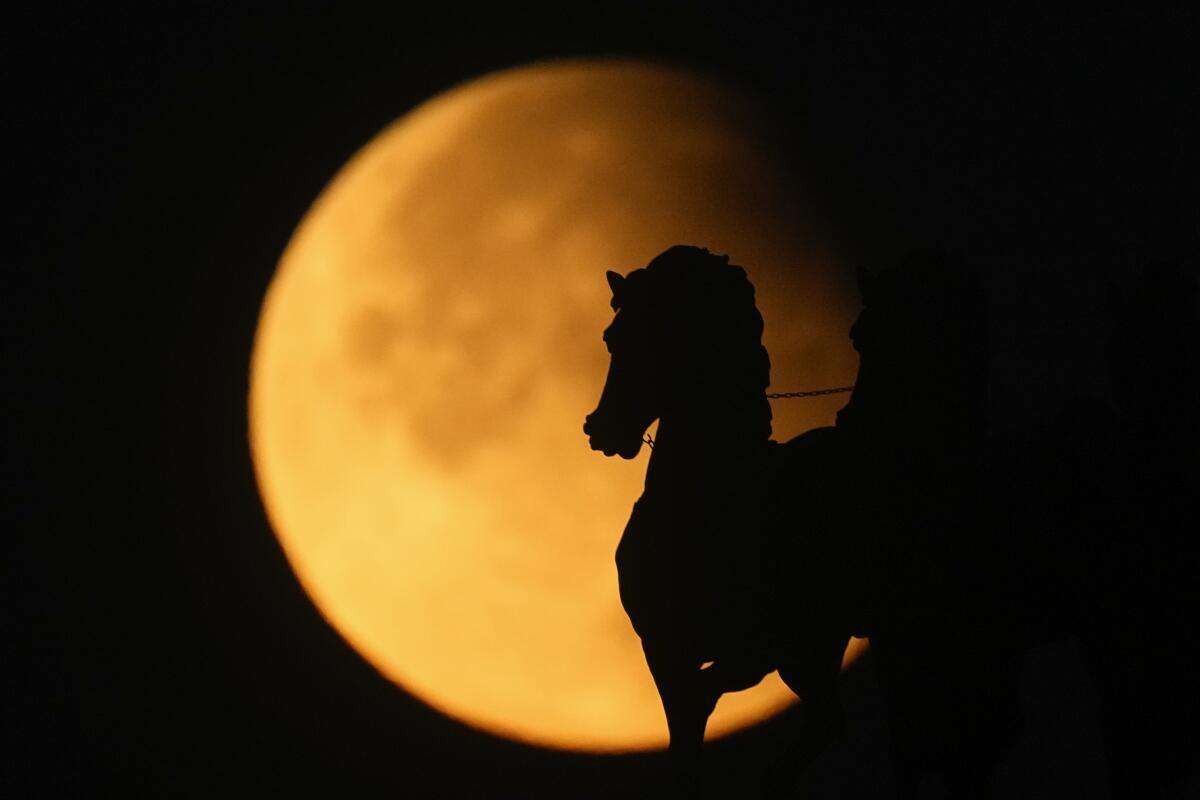The skies lit up Tuesday night with a double lunar event: a harvest supermoon and a partial lunar eclipse.
Supermoons are full moons because they coincide roughly with the closest approach to Earth of the Moon’s orbit, known as perigee.
According to NASA, the moon was 30% brighter and 14% larger the farther the moon’s orbit from us, or higher, than the apogee.
Tuesday’s supermoon is a harvest supermoon because it’s the full moon that appears closest to the fall equinox. The name dates back hundreds of years, when farmers sometimes used moonlight to work in the evening.
But the bright sky was not the only thing that the audience noticed.

A horse statue is shadowed against the moon during a partial eclipse early Wednesday morning in Moscow.
(Pavel Petnyakov/Associated Press)
The full moon — the second of four supermoons in four months — coincided with a partial lunar eclipse. A lunar eclipse occurs when the Earth passes between the Sun and the Moon and casts a shadow on the Moon.
In this case, about 3.5% of the Moon appeared to be obscured by Earth’s umbra, which describes the darkest part of Earth’s shadow.
Unlike the solar eclipse in April, you don’t need special glasses to safely view the lunar eclipse.
In Southern California, the moon rose at 6:52 p.m. The largest bite of Earth appeared at 7:44 p.m. and gradually dissipated over 31 minutes. At 9:48 PM, the moon was very bright.
Tuesday’s moon follows the August 19 Super Blue Moon. A blue moon does not describe the color of the moon; Rather, it refers to the third full moon occurring in a season of four full moons.
Experts consider supermoons to be within 90% of the Moon’s closest approach to Earth.
The August supermoon was 224,000 miles from Earth. This month was a little closer: 222,000 miles away.
The next supermoons are October 17 and November 15.
